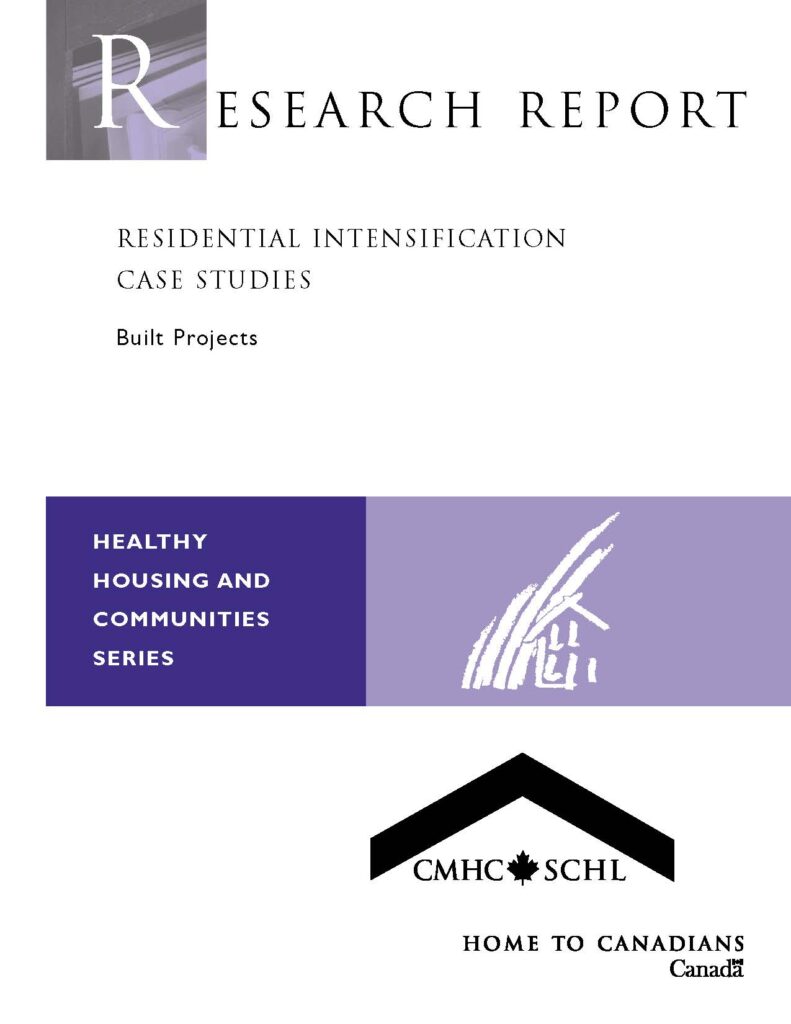
This CMHC study investigates residential projects that have overcome barriers to infill development, including development cost, public opposition, and regulatory processes.
Key insights:
For each project detailed in the report, the following resources are provided:
- Technical specifications
- Successes and obstacles faced from developer, resident, and municipal planner perspectives
- Lessons learned are shared for consideration for future projects.
Selected infill projects span a variety of regional and municipal contexts across Canada, and are reflective of different scales of development, ranging from 16 condo units to 1,600 unit apartment complex developments.
Case studies include:
- Angus, Montréal, Quebec
- Bishop’s Landing, Halifax, Nova Scotia
- Co-opérative d’habitation du Couvent de Saint-Henri, Montréal, Quebec
- Convoy Quay Gardens, Bedford, Nova Scotia
- Cranberry Commons, Burnaby, British Columbia
- Fifth Street Lofts, Edmonton, Alberta
- Garrison Woods, Calgary, Alberta
- Gower Gardens, Gibsons, British Columbia
- Harmony, Toronto, Ontario
- Koo’s Corner, Vancouver, British Columbia
- Les Lofts du Pont, Montréal, Quebec
- Les Lofts Laliberté, Québec, Quebec
- London Lane, Guelph, Ontario
- Parkside Mews, Ottawa, Ontario
- Portland Park Village, Toronto, Ontario
- Salsbury Heights, Vancouver, British Columbia
- Seagram Lofts, Waterloo, Ontario
- Sterling Place, London, Ontario
- The Carlings at Arbutus Walk, Vancouver, British Columbia
- The Prince Edward, Moncton, New Brunswick
- The Renaissance at North Hill, Calgary, Alberta
- Waterford Suites, Halifax, Nova Scotia
- Western Elevator Lofts, Winnipeg, Manitoba



